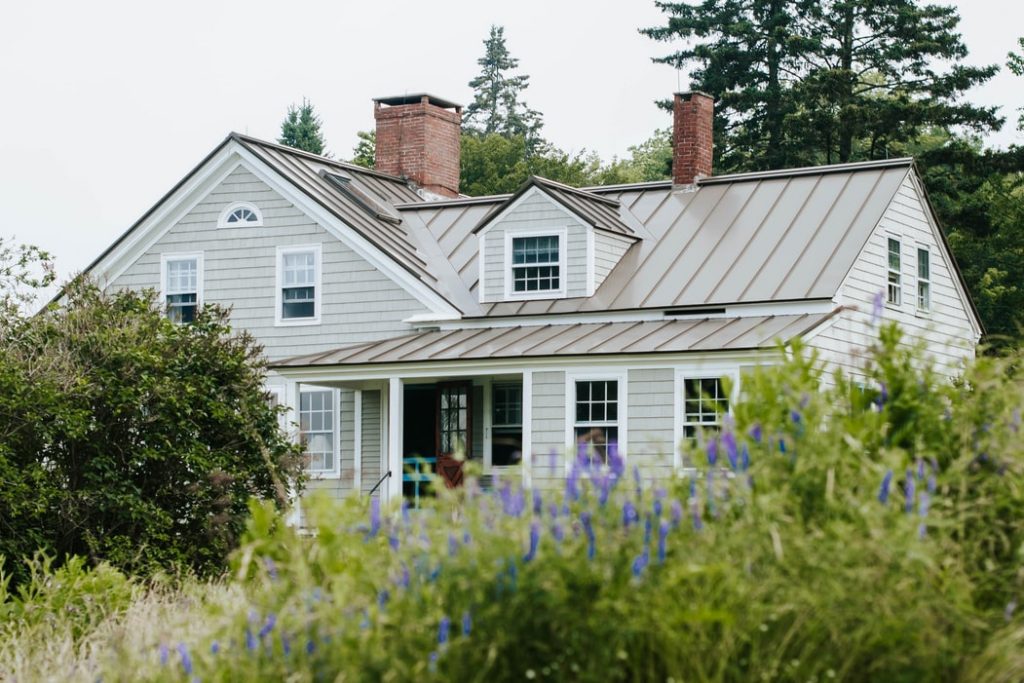Table of Contents

A significant home improvement project is getting a new roof. Once you have made the decision to proceed with an endeavor of this kind, you will want to be sure you have got the best resources and merchandise on your side. However, timing is another factor to take into account when replacing a roof.
This article provides some advice on when it is best to start a roof replacement job. You should make a point to discuss peak roofing period and what factors to take into account with your contractor before beginning your job amid and outside of what are the most well-liked times per year to install an entirely new roof onto your home:
What Time of Year Should You Replace Your Roof?
There is a time and place for everything, and the same is true of roofing. There are periods of the year when interest is higher due to the complexity of the work required to replace a roof.
The peak roofing occurs from late summer through early October. Renovations done outside are best done during these few months because of the generally pleasant weather. Even though it is usually hot at this time of year, it is also dry. You can check out ktmroofingboston.com for more detailed information on availability.
Your roof protects your house from the elements, and the materials utilized to do so perform better in a dry environment. It is not desirable for such a significant investment to have exposed roofing elements because rain and hail can harm them. Even if there isn’t water intrusion at the moment, one strong storm can change that, and leave you wishing you had regular roof inspections performed on your home.
From July to November, the warm and arid weather allows for more reliable and quick roof installation. Take the time to explore the advantages and factors of roofing at the busiest time of year in more detail.
Late summer and early fall are the busiest seasons of the year for roofing businesses. There are several explanations for why so many people choose to finish their work at this time. Bear in mind that summer can make it difficult to find contractor availability, so it’s best to seek quotes early from multiple roofing contractors, so you can have someone scheduled to handle your roof work.

Pros
Weather that is often pleasant is one of the main benefits. Although rain in the winter and spring might make roof replacement less predictable because work must stop in bad weather. If rain were to roll in during a reroof, your contractor would adequately tarp the exposed areas well, and return once the roof was dry and ready to be worked on.
Temperatures can affect how well roofing materials adhere. Roof replacement is best done when the temperature is over 45 degrees. As a result, the materials, such as shingles, can form a strong thermal seal with the roof.
Cons
It is normal for prices to increase for summer roofing jobs due to the strong demand. This is brought on by rising shingles and tile prices as well as rising labor costs. There are some additional advantages for homeowners when a roof is replaced outside of the busy season. Again, based on the condition of your roof following installation, you will be able to decide whether or not to replace it right away, regardless of the season.
Consult A Roofer
Have your roofing system inspected twice a year, in the spring and the fall. This guarantees that major damage (such as dents as well as missing shingles) has not been brought on by winter/spring rain and hail.
To find out if the hot summer temperatures have affected the asphalt and glue, checks in the fall are advised. Getting a new roof as soon as possible is a smart option if your roof exhibits signs of deterioration during your fall inspection.
By doing this, you can be confident that your roof will adequately safeguard your house for the rest of the summer months and be ready for the upcoming winter. Don’t take any chances holding off on repairs for a roof that has any sort of evident water intrusion. Instead, schedule a roof inspection at the first sign of trouble and be certain that you explain the urgency of the situation if there is an active leak in your roof.

Pros
The regulation of your home’s temperature is greatly aided by its roof. By replacing your roof in the spring and winter, you can put your house in the best possible energy-efficient position for the hotter summer and fall months.
In the hot heat that is encountered from July through November, a fresh roof is more effective in keeping your home cooler. If you complete the task in the autumn and winter months, you will save more energy in the hottest part of the calendar year and can use those savings for other things.
There is frequently more availability for arranging roof replacements during the off seasons of spring and winter due to lesser demand. In addition, homeowners may find that roofing in the off-season is a more cost-effective alternative because of the greater availability of workers and lower cost of roofing supplies.
Cons
Our region of the country rarely experiences snow, but Texas frequently experiences sleet and ice conditions in the months of December and January. For roofing, low temperatures can lead to a few issues. Shingles can become brittle in the cold and shatter more easily in the winter. This may increase the project’s material expenses.
The Final Conclusion
It could be best to schedule the replacement of your roof for fall to take advantage of the mild weather, reduce the likelihood of rain and hailstorms and have your house ready for winter. Fall is the most common season for roof replacement because the temperatures are decreasing off from the summer but are still sufficiently warm to ensure effective sealing.
